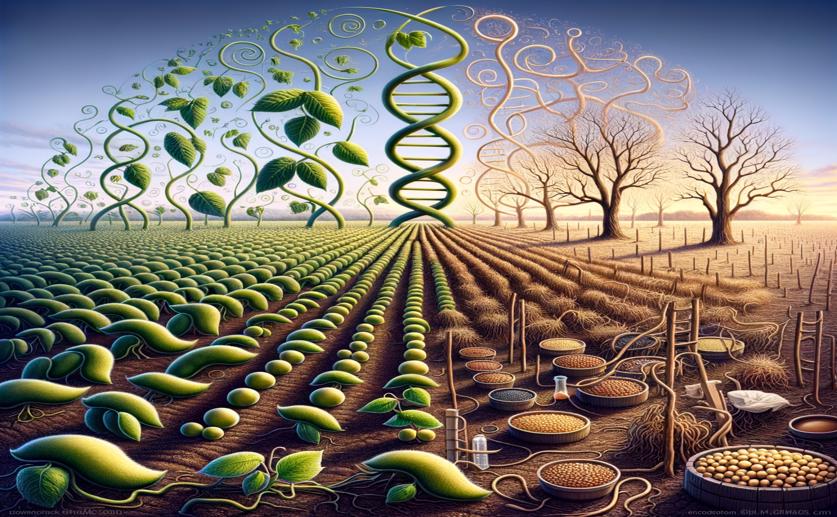
Predicting Soybean Growth and Drought Survival with Genetics
Jim Crocker
11th March, 2024

Image Source: Natural Science News, 2024
Key Findings
- Tokyo researchers developed models to predict soybean growth using genetic and environmental data
- The models, using aerial drones, showed how soybeans react to drought by analyzing canopy area and height
- While not more accurate than single-trait predictions, the models revealed how genetics and environment interact, especially in later growth stages
AgricultureGeneticsPlant Science
References
Main Study
1) Reaction norm for genomic prediction of plant growth: modeling drought stress response in soybean.
Published 9th March, 2024
https://doi.org/10.1007/s00122-024-04565-5
Related Studies
2) Genomic Prediction of Green Fraction Dynamics in Soybean Using Unmanned Aerial Vehicles Observations.
3) Genomic prediction modeling of soybean biomass using UAV-based remote sensing and longitudinal model parameters.
4) Utility of Climatic Information via Combining Ability Models to Improve Genomic Prediction for Yield Within the Genomes to Fields Maize Project.
5) Tackling G × E × M interactions to close on-farm yield-gaps: creating novel pathways for crop improvement by predicting contributions of genetics and management to crop productivity.



 7th March, 2024 | Jenn Hoskins
7th March, 2024 | Jenn Hoskins